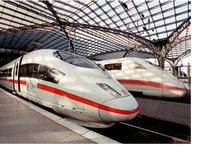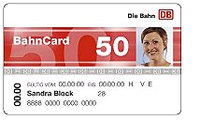Train Travel: Trains in Italy
Planning to travel to Italy? This is one of the best times in a year to do it.
And if you think of experiencing all of this beautiful Italian Peninnsula's charm - there's no better way to do it than buying a ticket, taking a comfy seat by the window in a fast train and... Enjoy the view!
Italy train travel is fairly inexpensive and reliable. Traveling by train in Italy is a good way to travel once you know the ins and outs.

The railway network in Italy is approximately 16000 km in length and is managed by Trentitalia. The network includes all the railway tracks, connecting to Italy's offshore islands of Sardinia and Sicily by ferries.
The rail network provides good transport links to other neighbouring European countries. Switzerland is connected via the Sempione Pass tunnel across Ticino Canton heading towards Milan. You can reach Austria by the Brennero and Tarvisio lines and onwards into western and central Europe. And charming France is connected by the line that runs along the Nice, Ventimiglia and Turin.
Ferries connect the country with Greece, Turkey, Tunisia, Malta, Albania, Egypt and Spain. Since air travel within Italy is not cheap, the railway system, being good and inexpensive. The trains are generally on time, clean and comfortable, but one should remember to take some cash with you - Credit Cards might not be accepted.
The common trains in Italy are:
- the Eurostar(ES) which travels between Italy and the rest of Europe,
- Eurocity(EC) - travelling between european and italian cities,
- and Intercity(IC) which are, along with EC, more Italian-based and are cheaper than ES trains.
TICKETS
There are two types of train tickets:
- First class seats often recline, there are fewer seats per car, and there is more space for luggage. On some Premier Trains, the price of a first class ticket includes a meal.
- Second class accommodation are less expensive, but not as spacious, as there are more seats per car.
A ticket allows you to board the train, but does not guarantee you a seat. Remember to make a seat reservation to have a guaranteed seat on the train. This is especially important during the "high season" or Italian holidays (especially: August - whole month, Christmas and New Years, long weekends, etc.). If you plan to travel during that time, book your ticket early, in advance, to avoid any umpleasant surprises.
For certain trains, such as fast trains or Inter City, there's a supplement to be added to the ticket price.
In Italy, you have to purchase your train ticket before getting on the train. It's not acceptable to buy it on the train, and if you're found without ticket you'll be fined. There are often long queues at the ticket office of the railway stations.
 The train prices vary according to type of class, destination and type of train. The prices are relatively more expensive than driving across. A three hour trip can cost about 30 euro.
The train prices vary according to type of class, destination and type of train. The prices are relatively more expensive than driving across. A three hour trip can cost about 30 euro.
However, Italian Railways offer special discount prices for kilometre tickets. For example, you can buy a 3000 km ticket at a discount of approx. 20% and you can accumulate the kilometres each time you travel until you reach the maximum kilometres. You also find (and buy) special cards for very young children, elderly people (over 65) and groups. Ask for special cards and tickets at the station's Information Office.
Important Tip: Train tickets have to be timestamped for validity before entering the train. The timestamp machines are located in the train station next to the train tracks/bins.
The travellers outside of Europe might not be used to the standard of locating trains numbers, destinations and times. The train name, number, time and the track/bin number are written on the train announcement boards. The platform number should be written in white to show that it is valid for the period of your travel.
Train timetables change at the beginning of autumn and the end of winter (September and March) so make sure you are using the right train timetable.
Validate your train ticket before boarding !
Booking is an obligation but the Station Information Service does give refunds to those who missed their trips for specific reasons. An Italian dictionary or phrase book might be of good use when asking for information. An alternative is booking at the travel agent, most of them sell train tickets for all destinations. Expect to pay more for a ticket bought through an travel agency.
You must validate the ticket by stamping it in one of the gold-colored machines, located at the front of the platforms.
Ticket dispensing machines can luckily be found on the platforms of train departures sometimes, but not always.
For this reason it's more practical and often cheaper to buy train tickets or make your seat reservations before, so you can avoid fully booked trains. The simplest way to do so is online, through the Internet.
When traveling to large cities such as Rome for two or three nights we recomend you use the train, First class is not that much more and is extremly comfortable.
You'd probably like to visit the official site of the State Railway (Ferrovie dello Stato). Time-tables (in English and German, too!), railway network maps, stations. Tariffs and special offers. The Italian railway service offers an on-line buying service for Eurostar and Intercity tickets. The will be delivered to your home anywhere in Italy by an express Payment is by credit card, protected by the most advanced security systems.
Do you have any other travelling tips about Italy? If so -



